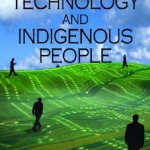This article examines the identity created for Indigenous peoples by the Europeans, and ways in which Indigenous peoples can reverse the devastating effects of colonialism. The term “Indian” for instance, came from the Europeans. Decolonization involves shedding the identity imposed upon Indigenous people by outsiders. Indigenous Peoples and First Nations are acceptable terms to tribal people, and some tribes are now going back to their original names, such as Diné instead of Navajho.
The author summarizes the push towards decolonialism when he states: “For too long now, the native peoples of this hemisphere have remained passive while the European invader does away with all of the ancient place-names, and then comes up with new names for the native people and their land … This land is not Indian and we are not lndians….”
Many tribes had forgotten the origin of their native names, many of which were sacred in nature. This self-naming is a human, natural process that is based upon self-determination. It allows Indigenous peoples “of saying, not asking the world who we were.” Unfortunately the practice persists. Non-Indigenous researchers and government officials continue to provide Anglicized names for Indigenous locations towns, languages. There’s a problem with the term “Indigenous” because it tends to lump all non-white peoples into the same mold, regardless of experiences under colonial occupation.
Written cultures are highly suspect to Indigenous peoples because of the many treatises that were signed and broken. This explains why some indigenous educators, such as Tasha Beeds, are calling for using traditional stories as the basis for promoting literacy.
This paper is useful to place-based learning because it promotes rhetorical sovereignty: the use of traditional names for Indigenous peoples, places, and objects. Place-based learning is vital to Indigenous contexts because it expresses and defines their worldviews. “Tribal language has a vital relationship to the philosophical thought process—cognizance of one’s worldview; it is our tribal identity in action and self-defining.” Where names given to Indigenous peoples by whites are adjectives, that describe their skin color, or other physical features, or their location, traditional names describe political standing, “numerical status” and social class. It describes a tribe’s strength wealth, and power.
The non-Indigenous names that were given by the Europeans were intended to create individuals of tribe members, and in so doing destroy the tribes and assimilate Indigenous peoples into the mainstream culture. That was the plan. The author distinguishes between race, ethnicity, and culture. Race is the arbitrary description of people based upon physical appearance. Culture the set of beliefs and practices of a population, while ethnicity is the subgroups one often finds within a culture. Race has no place education; some races are not more intelligent than others.
The paper examines the notion that Western cultures consider themselves more superior to others, and that those with the superior intellect have a moral obligation to dominate the lesser intellects. That has been the justification all along for dominating Indigenous peoples, even in the feeble attempts to represent them, as in the film Nanook of the North. Westerners view themselves as logical, and it is their job to control nature. They view Indigenous peoples as one with nature, the very entity that must be controlled.
The author concludes that the issue isn’t so much race; that is, Indigenous people’s so-called inferior intellect, skin color, and beliefs. The real issue is white European hegemony that has suppressed the history, stories, rituals, beliefs, and practices of Indigenous peoples. The antidote to this malady is to infuse indigenous education with tribal stories, names, and histories instead of perpetuating the hegemony of the dominant society by forcing Indigenous peoples to follow and learn their own curriculum.
References:
Beeds, T. Finding a place to stand: Indigenous education through oral and written narratives. Retrieved from http://blog.fedcan.ca/2011/03/23/finding-a-place-to-stand-indigenous-education-through-oral-and-written-narratives/
Pewewardy, C. Renaming ourselves on our own terms: Race, tribal nations and representation in education. Retrieved from http://www.hanksville.org/storytellers/pewe/writing/Rename.html
